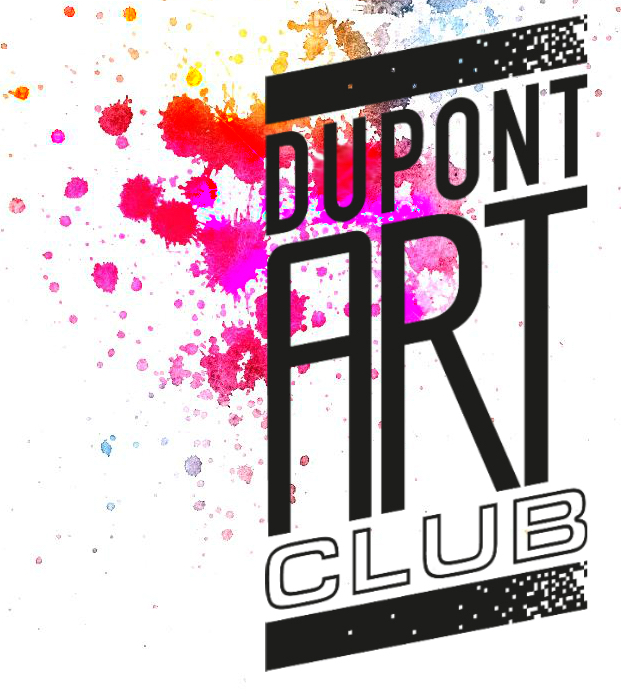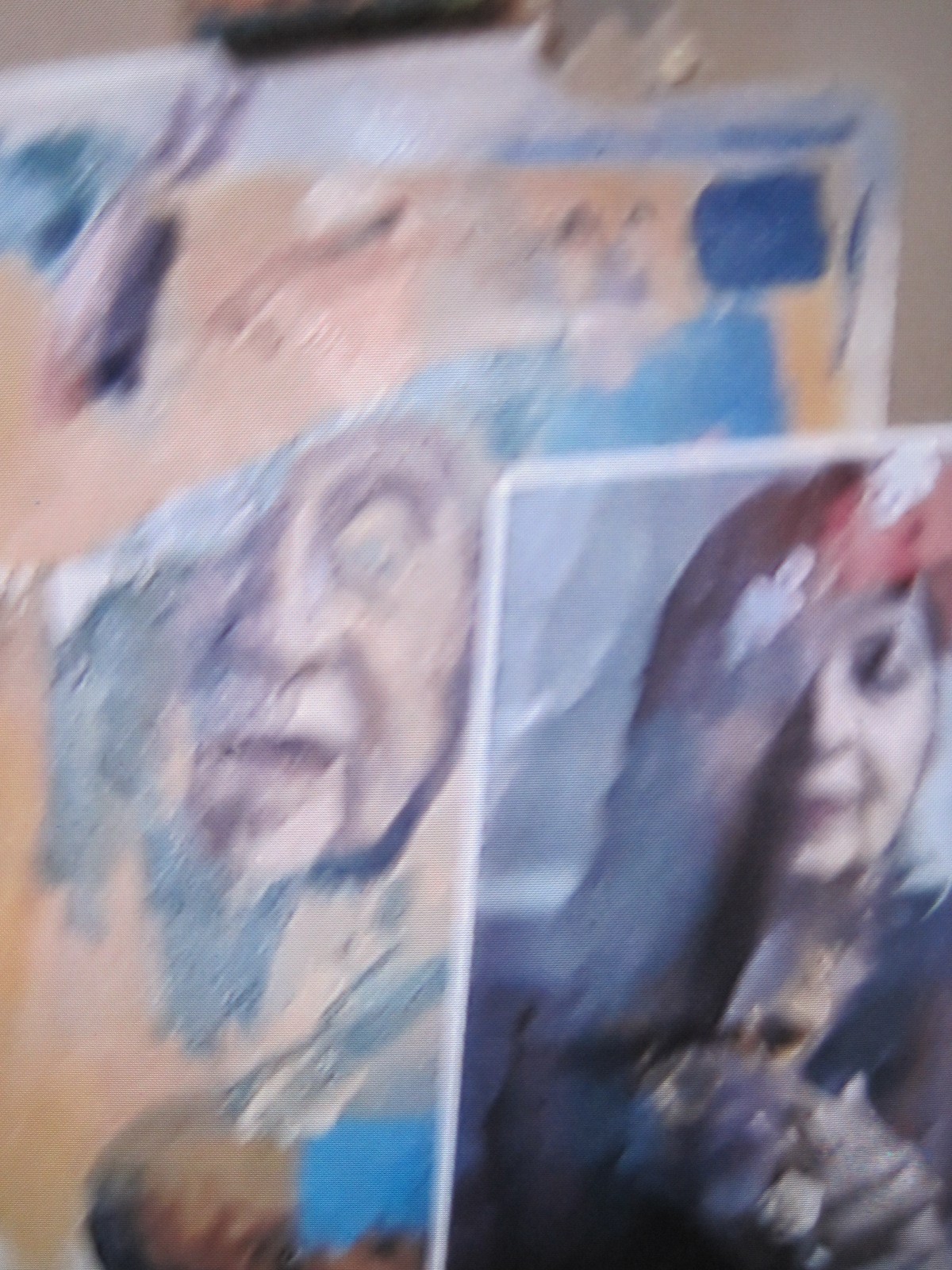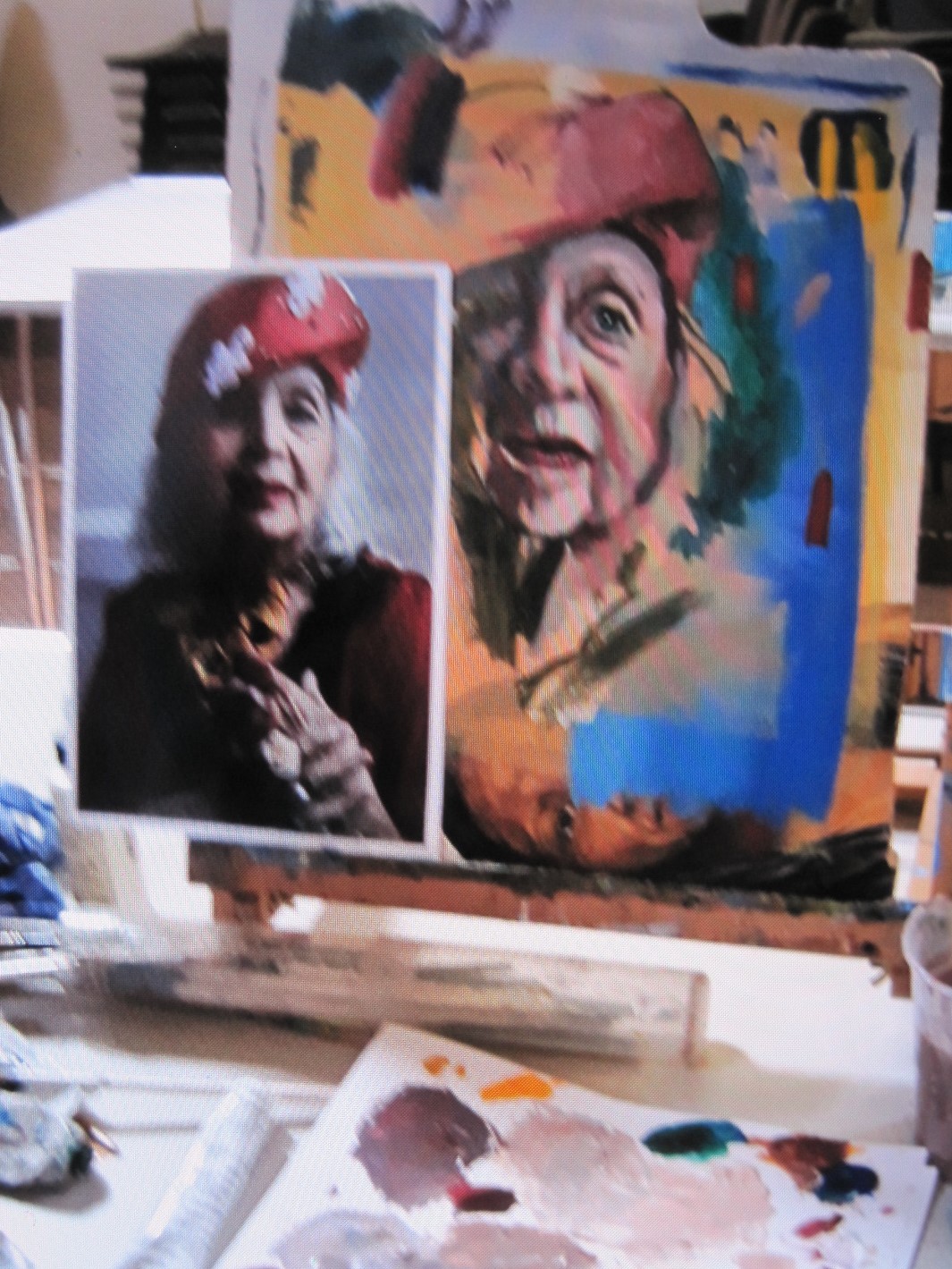Caroline started the session by explaining some of the qualities of acrylic paints. Acrylic is different from other mediums as the pigments are mixed with polymer resin and this enables the paint to dry much faster than oils. On the tubes of paint you may see a number 1 to 4. This indicates the price, 1 being the least expensive and 4 being the most expensive, often due to the cost of pigments used. “Hue” on the tubes means it is cheaper paint, using synthetic pigment. If chroma is mentioned this indicates brightness and intensity, grey being low chroma and pillar box red high chroma. For more information search “Munsell color solid and chart” online.
Caroline recommended “Golden” as being good quality and she demonstrated how a cadmium yellow in “Golden” brand covered a dark colour better than a cheaper brand.
Demonstration
Caroline’s subject was a photo of a glamourous, elderly woman which she had roughly sketched in with a dark green so she started by mixing skin tones on her palette from light to dark using mixtures of white, yellow ochre, cadmium red and ultramarine in varying quantities. For example a light shade was a mixture of white and yellow ochre with a touch of cad red to darker colours incorporating ultramarine or even phthalo green.
Using a pro-arte or graduate flat brush she blocked in the colours. Before they dried she wiped her brush dry and feathered the edges to blend the colours into one another. She worked in this way around the eye and along the nose. She picked out reds and mixed purple for the lipstick, telling us that Renoir achieved his bright red lips on women by underpainting white first. A discussion on the effects of painting over a coloured canvas ensured and Caroline demonstrated how the top colour was changed by different colours beneath. She demonstrated in detail painting in the eye first using an off white for the eye ball before toning it down. Then adding flecks of green to the iris – a bit of artistic license and finishing off with a dark pupil and a spot of white for the reflection. So the eye came dramatically to life.
Caroline finished the demo by showing us the impasto method on the background, whereby the use of thick paint to enhance the brushstrokes gives an interesting alternative to an otherwise empty space.


